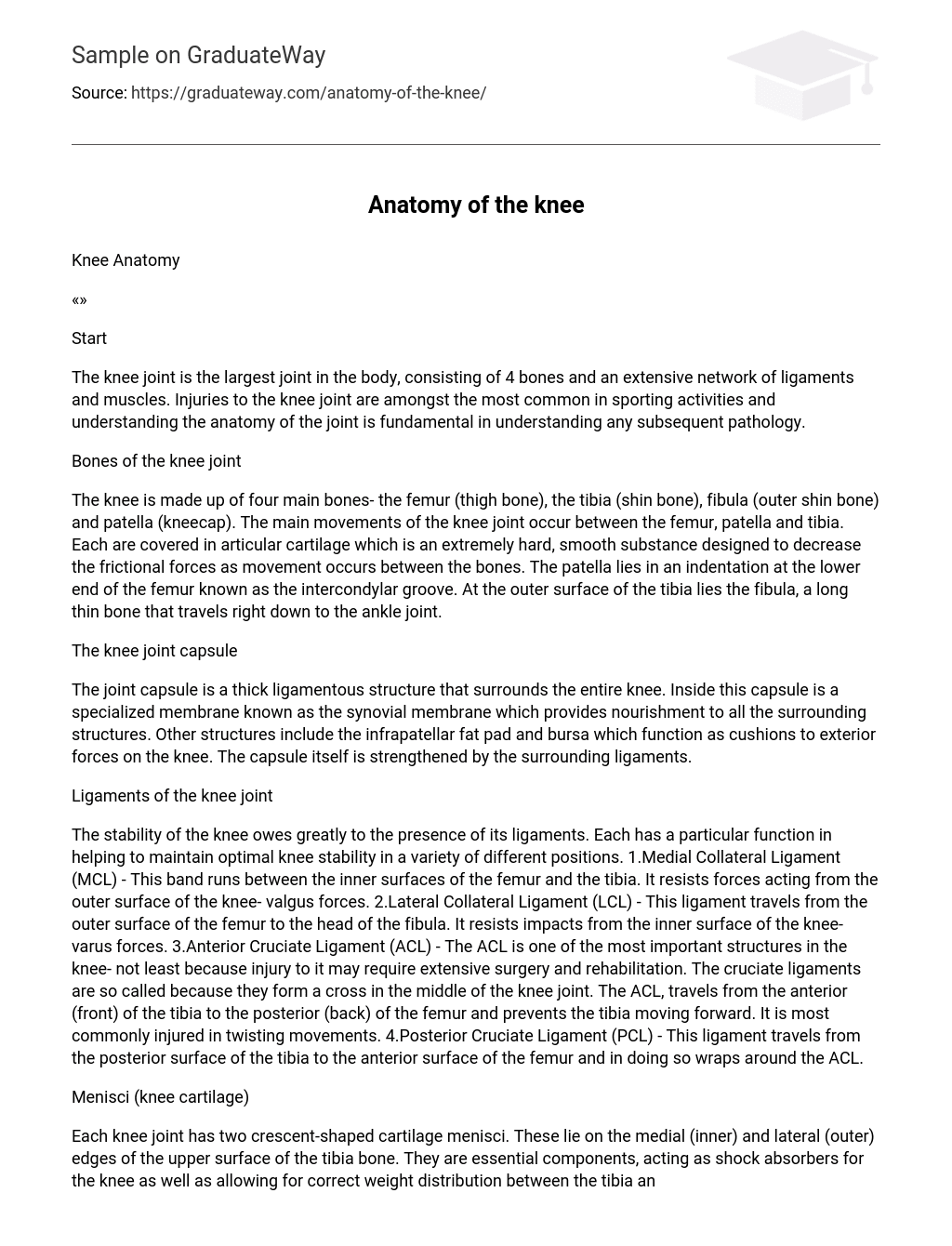Knee Anatomy
Start
The knee joint is the largest joint in the body, consisting of four bones and an extensive network of ligaments and muscles. Injuries to the knee joint are among the most common in sporting activities. Understanding the anatomy of the joint is fundamental in understanding any subsequent pathology.
The bones of the knee joint
The knee is composed of four main bones: the femur (thigh bone), the tibia (shin bone), fibula (outer shin bone), and patella (kneecap). The primary movements of the knee joint occur between the femur, patella, and tibia. Each bone is covered in articular cartilage, which is an extremely hard and smooth substance designed to decrease frictional forces during movement between bones. The patella lies in an indentation at the lower end of the femur known as the intercondylar groove. At the outer surface of the tibia lies a long thin bone called fibula that extends down to the ankle joint.
The knee joint capsule.
The joint capsule is a thick ligamentous structure that surrounds the entire knee. Inside this capsule, there is a specialized membrane known as the synovial membrane, which provides nourishment to all the surrounding structures. Other structures include the infrapatellar fat pad and bursa, which function as cushions against exterior forces on the knee. The capsule itself is strengthened by the surrounding ligaments.
The ligaments of the knee joint are important structures that help to stabilize and support the knee. There are four main ligaments in the knee: the anterior cruciate ligament (ACL), posterior cruciate ligament (PCL), medial collateral ligament (MCL), and lateral collateral ligament (LCL). These ligaments work together to prevent excessive movement of the knee joint and protect against injury.
The stability of the knee is greatly owed to its ligaments, each with a specific function in maintaining optimal knee stability in various positions.
- Medial Collateral Ligament (MCL) – This band runs between the inner surfaces of the femur and tibia, resisting forces acting from the outer surface of the knee (valgus forces).
- Lateral Collateral Ligament (LCL) – This ligament travels from the outer surface of the femur to the head of the fibula, resisting impacts from the inner surface of the knee (varus forces).
- Anterior Cruciate Ligament (ACL) – The ACL is one of the most important structures in the knee because injury to it may require extensive surgery and rehabilitation. The cruciate ligaments form a cross in middle of joint. The ACL travels from anterior (front) tibia to posterior (back) femur and prevents tibia movement forward. It is commonly injured during twisting movements.
- Posterior Cruciate Ligament (PCL) – This ligament travels from posterior surface tibia to anterior surface femur, wrapping around ACL.
Menisci are the pieces of cartilage located in the knee joint.
Each knee joint has two crescent-shaped cartilage menisci located on the medial (inner) and lateral (outer) edges of the upper surface of the tibia bone. These are essential components that act as shock absorbers for the knee and allow for correct weight distribution between the tibia and femur.
Muscle groups surrounding the knee joint.
The knee joint has two main muscle groups: the quadriceps and the hamstrings. Both groups are essential for moving and stabilizing the knee joint.
The quadriceps muscle group is composed of four individual muscles that unite to form the quadriceps tendon. This thick tendon connects the muscle to the patella, which in turn connects to the tibia via the patellar tendon. Contraction of the quadriceps pulls up on the patella, resulting in knee extension.
The hamstrings function by flexing the knee joint and providing stability on either side of its line.





